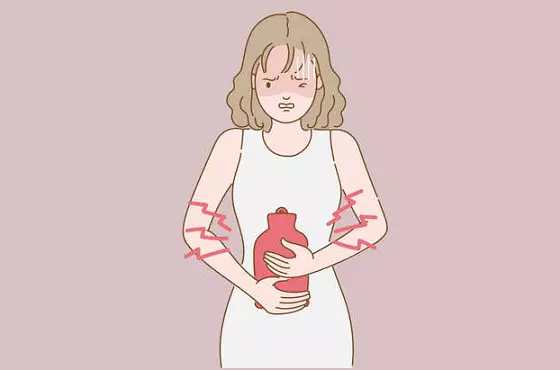Table of Contents
- What is Dysmenorrhea
- Causes of Dysmenorrhea
- Symptoms of Dysmenorrhea
- Treatments for Dysmenorrhea and Period Cramps
- Conclusion
What is Dysmenorrhea

Dysmenorrhea, more commonly known as menstrual cramps, is a medical condition that affects women of childbearing age a week before or during their period. The pain you may feel from menstrual cramps mostly affect the lower abdominal area but can also cause back pain, fatigue, mood swings, constipation, and nausea. Many women dread getting their monthly period as dysmenorrhea symptoms can sometimes be so severe that daily activities can be hard to manage. Fortunately, there are a number of things that women can do to help ease the pain of menstrual cramps.
Causes of Dysmenorrhea
The exact cause of dysmenorrhea is unknown but it seems to be a chemical imbalance issue believed to be related to the production of prostaglandins. Prostaglandins are hormones that are involved in the contraction of muscle tissue. That feeling of your uterus being squeezed for a few seconds and then being released is your muscle tissues contracting. Some women may be more sensitive to prostaglandins than others. Women with higher levels of prostaglandins are more likely to experience severe period cramps. Women who smoke regularly, drink while on their period, and women who are overweight are at higher risk. There are also many blessed women who don’t experience any cramps before or during menstruation.
Symptoms of Dysmenorrhea
In addition to abdominal pain, dysmenorrhea can also cause nausea, vomiting, diarrhea, headaches, dizziness, and fatigue. The pain can range from mild to severe and typically begins one or two days before a woman’s period starts. For some women, the pain lasts only a few hours, for others, it can last for several days.
Many women also report experiencing heightened feelings of anxiety and depression a week before and during their period, in some cases being severe enough to ruin relationships, work, or even cause suicidal thoughts. There are also cases where having these psychological disorders actually exacerbates the severity of menstrual pain from dysmenorrhea.
Treatments for Dysmenorrhea and Period Cramps
Over-the-counter Medications
There are many over-the-counter medications that can help to relieve the pain of menstrual cramps. Nonsteroidal anti-inflammatory drugs (NSAIDs), such as ibuprofen, naproxen, and aspirin, are effective at reducing inflammation and pain.
Diuretic medications like Midol can also help with cramps and bloating. If OTC medications are not sufficient, your doctor may prescribe a stronger medication.
Heat
Heat can also be helpful in relieving the pain of menstrual cramps. Applying a heating pad to your abdomen or lower back for 20 minutes at a time can help to relax the muscles and ease the pain. A boiled rag or water bottle full of hot water can be good DIY alternatives if you don’t have a heating pad. Taking a warm bath or shower may also help provide relief.
Exercise
Another great way to reduce the pain of menstrual cramps is to exercise. While the gym sounds like the last place you want to be when you have cramps, moderate exercise can actually help to reduce muscle tension and improve circulation, both of which can help to ease the pain. Just be sure not to overdo it as too much exercise can actually make the pain worse, especially ab work outs. A brisk walk with fresh air is sometimes all you may need.
Foods
When having severe cramps, some may opt to overeat while others may not have an appetite at all. The best foods to eat to help alleviate period cramps are one’s that are natural, light, and easily digestible. Fruits and vegetables, especially leafy greens, are great to help with inflammation and feeling bloated. The high fiber will also help you pass bowel movements easing up the pressure on your lower abdomen.
Foods that are high in Omega-3 fatty acids and vitamin B12 are also recommended like seafood, eggs, chia seeds, flaxseeds, almonds and nuts. It’s also imported to stay hydrated by drinking a lot of water through out the day, no matter how bloated you feel. A hot tea like barley tea can be very soothing for cramps and can help you hydrate while being calm and relaxed.
How To Make Your Period Come Faster – 8 Best Things To Do
Conclusion
If you’re experiencing pain during your period, you’re not alone. Dysmenorrhea is a very common and increasingly fast growing condition that women all over the world experience. Women have been looking to find remedies for period cramps since ancient times. It may seem like a solution-less curse that women have to endure for 30-40 years but there are several treatment options available that can help reduce pain and other symptoms. If over-the-counter medications don’t work for you or your symptoms are especially severe and lasting longer than usual, make an appointment with your doctor to discuss what other options are available for you to deal with dysmenorrhea.
Learn more about acupressure to naturally relieve pain and anxiety.







